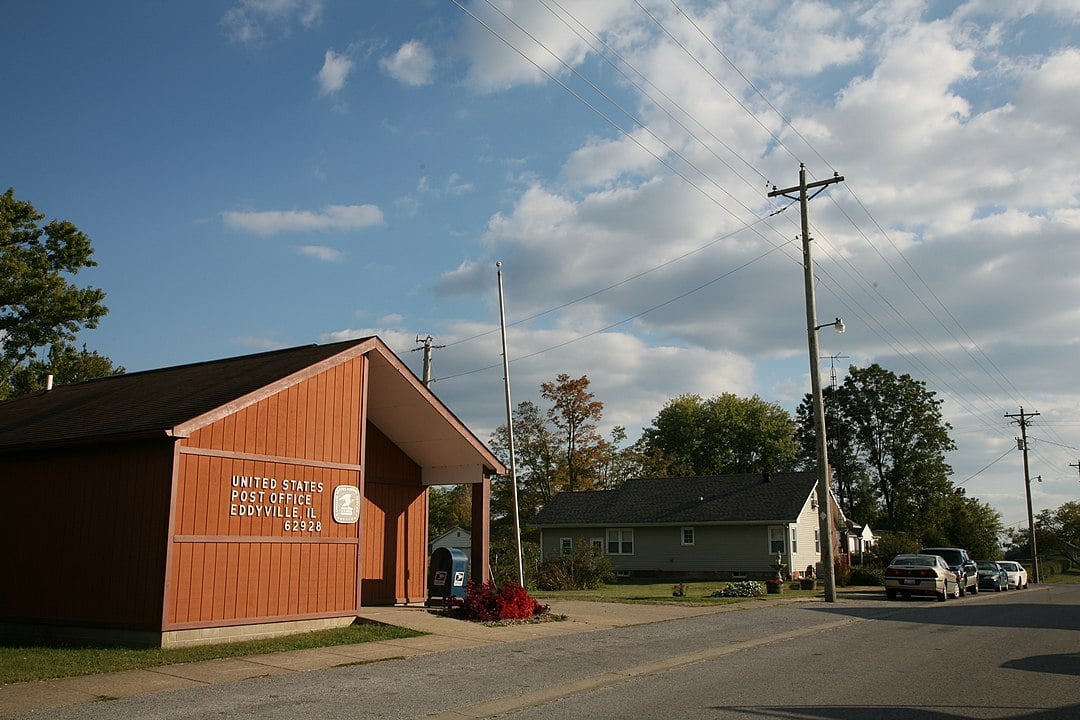
Best suburbs to live in Illinois
Cities may have the nightlife, but the convenience and affordability of the suburbs are becoming hot as the millennial generation moves into its homebuying phase. Even before the COVID-19 pandemic shook up workplace norms and superheated the housing market, folks have been flocking away from major urban centers.
In Colorado, for instance, lesser-known suburbs outside of Denver such as Boulder have become magnets for young parents, ranking among the biggest destinations for out-of-state millennials who chose to move in 2023. And companies are taking note of the trend as well: Many are establishing satellite offices and new headquarters in less urban areas.
Stacker compiled a list of the best suburbs to live in Illinois using data from Niche’s 2024 Best Places to Live. Niche ranks places to live based on an array of factors, including the cost of living, educational level of residents, housing costs, and quality of schools.
You may also like: Counties with the most bridges in Illinois

#30. Glen Ellyn, Illinois
– Overall Rank: 216
– Population: 28,304
– Median household income: $128,132
– Median home value: $516,600 (78% own)
– Median rent: $1,223 (22% rent)
– Top public schools: Glenbard West High School (grade A+), Wheaton Warrenville South High School (grade A+), Lincoln Elementary School (grade A)
– Top private schools: Naperville Christian Academy (grade A+), St. Francis High School (grade A+), Nazareth Academy (grade A)

About
Glen Ellyn is a village in DuPage County, Illinois, with just under 30,000 residents. It offers a mix of historic charm and suburban convenience, located about 25 miles west of Chicago. The tree-lined neighborhoods and small-town feel make it appealing to families and professionals alike.
Downtown Glen Ellyn serves as the center of activity, filled with local shops, restaurants, and community theaters. Lake Ellyn Park is a popular spot for year-round events, from summer festivals to winter skating. Recreation trails and green spaces give residents plenty of options to stay active outdoors.
Education plays a strong role in the community, supported by well-regarded schools and the College of DuPage. The college adds cultural events, performances, and educational opportunities to village life. With its blend of history, community pride, and accessibility, Glen Ellyn continues to thrive as a welcoming place to live.
Where is Glen Ellyn?
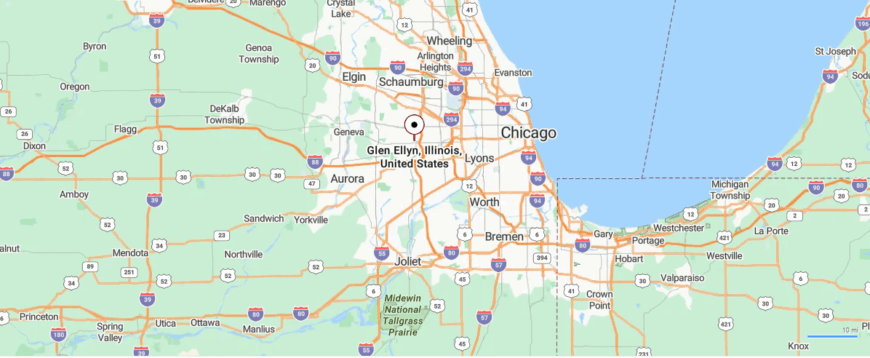
Glen Ellyn is a suburban village in DuPage County, Illinois, located about 23 miles west of downtown Chicago. It covers just under 7 square miles, with neighborhoods built around rolling terrain and small lakes. The village center lies along the Union Pacific/Metra West Line, offering direct rail service into Chicago.
Roosevelt Road (U.S. Route 38) runs east–west through the southern part of Glen Ellyn, while Interstate 355 sits just a few miles to the west, providing access to the regional highway network. Nearby towns include Wheaton to the west and Lombard to the east. Glen Ellyn’s location places it firmly within the Chicago metropolitan area while maintaining its own village core and local connections.
#29. River Forest, Illinois
– Overall Rank: 212
– Population: 11,568
– Median household income: $144,784
– Median home value: $668,900 (88% own)
– Median rent: $1,347 (12% rent)
– Top public schools: Jones College Prep High School (grade A+), Oak Park & River Forest High School (grade A+), Lincoln Elementary School (grade A)
– Top private schools: Fenwick High School (grade A+), Trinity High School (grade A), Hinsdale Adventist Academy (grade A)

About
River Forest is a village in Cook County, Illinois, known for its historic homes and leafy streets. With a population of about 11,000, it offers a close-knit suburban atmosphere just west of Chicago. Its location provides residents with both quiet neighborhoods and quick access to city life.
Architecture is a highlight, with designs by Frank Lloyd Wright and other Prairie School architects scattered throughout the community. The village is also home to Dominican University and Concordia University, adding cultural and educational depth. Parks and tree-filled avenues create a scenic backdrop for everyday living.
Residents value strong schools and an active local community that organizes events and volunteer efforts. The village’s history blends with a modern lifestyle, giving it a balance of tradition and progress. River Forest stands out as a place where heritage, education, and community spirit all come together.
Where is River Forest?
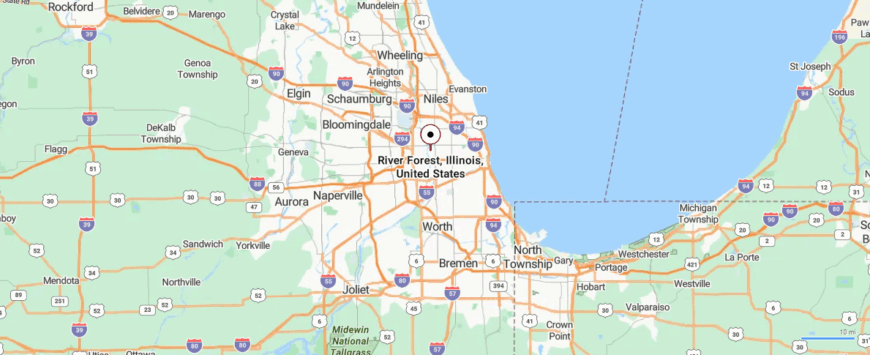
River Forest is a village in Cook County, Illinois, situated about 10 miles west of downtown Chicago. It covers roughly 2.5 square miles and lies just north of Oak Park and east of Forest Park. The Des Plaines River forms its western boundary, with forest preserves lining much of the area.
The village is served by Metra’s Union Pacific West Line, providing direct rail access to Chicago. Major roads include Illinois Route 43 (Harlem Avenue) running north–south and Lake Street crossing east–west. River Forest’s location gives it both suburban character and close proximity to the city’s core.
#28. La Grange Park, Illinois
– Overall Rank: 202
– Population: 13,332
– Median household income: $113,419
– Median home value: $394,500 (74% own)
– Median rent: $1,398 (26% rent)
– Top public schools: Lyons Township High School (grade A+), Riverside Brookfield Township High School (grade A), Park Junior High School (grade A)
– Top private schools: Fenwick High School (grade A+), Trinity High School (grade A), Nazareth Academy (grade A)

About
La Grange Park is a village in Cook County, Illinois, with a population of around 13,000. Situated just 15 miles west of downtown Chicago, it provides suburban comfort with easy city access. The community is known for its quiet neighborhoods, tree-lined streets, and strong sense of stability.
The village features several parks and forest preserves that offer trails, picnic areas, and outdoor recreation. Brookfield Zoo, located nearby, adds to the area’s family-friendly attractions. Residents also enjoy a walkable downtown district in neighboring La Grange with shops, dining, and entertainment.
Education is a cornerstone of La Grange Park, supported by quality schools and active community organizations. The village hosts events and programs that keep residents connected and engaged. With its balance of convenience, green space, and community pride, La Grange Park remains a sought-after suburban home.
Where is La Grange Park?
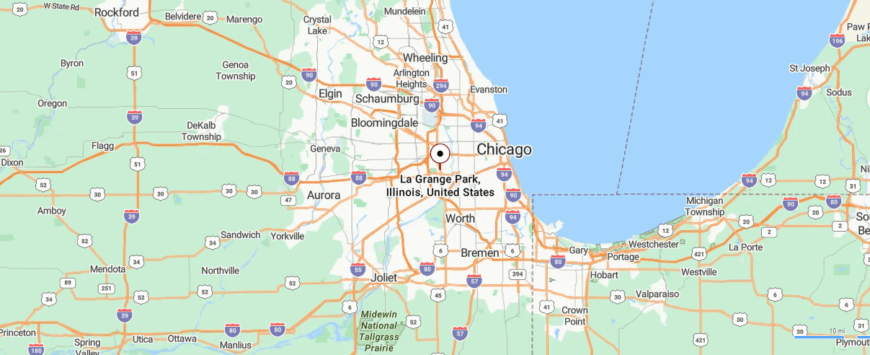
La Grange Park is a village in Cook County, Illinois, located about 15 miles west of downtown Chicago. It spans roughly 2.3 square miles and sits just north of La Grange and west of Brookfield. The village is bordered in part by the Salt Creek and several forest preserves that shape its edges.
U.S. Route 12/20/45 (La Grange Road) runs along the western side, while U.S. Route 34 (Ogden Avenue) lies just south, connecting the area to Chicago and surrounding suburbs. Metra’s BNSF Railway Line is accessible from nearby La Grange stations. La Grange Park’s position offers easy access to major highways, commuter rail, and green space, while remaining closely tied to the Chicago metro area.
#27. Bannockburn, Illinois
– Overall Rank: 193
– Population: 1,065
– Median household income: $161,875
– Median home value: $1,027,400 (86% own)
– Median rent: $1,388 (14% rent)
– Top public schools: Adlai E. Stevenson High School (grade A+), Deerfield High School (grade A+), Lake Forest High School (grade A+)
– Top private schools: Lake Forest Academy (grade A+), North Shore Country Day (grade A+), Woodlands Academy of the Sacred Heart (grade A+)

About
Bannockburn is a small village in Lake County, Illinois, with fewer than 2,000 residents. Known for its large lots and open green spaces, it offers a distinctly rural character compared to nearby suburbs. Its location about 30 miles north of Chicago provides both privacy and accessibility.
The community emphasizes a quiet residential atmosphere, with winding roads and homes set back on spacious properties. Bannockburn Green Shopping Center serves as a local hub for shops and services. Nearby forest preserves add to the village’s natural setting and outdoor opportunities.
Education is an important part of village life, highlighted by Bannockburn School District and its reputation for excellence. Residents also benefit from proximity to higher education institutions like Trinity International University. With its blend of seclusion, strong schools, and natural beauty, Bannockburn offers a unique suburban lifestyle.
Where is Bannockburn?

Bannockburn is a small village in Lake County, Illinois, about 30 miles north of downtown Chicago. It covers just over 2 square miles and is bordered by Deerfield to the south and Lincolnshire to the west. The village is largely residential, with open space and wooded areas shaping much of its layout.
U.S. Route 41 and Interstate 94 run along the eastern edge, offering direct routes into Chicago and Milwaukee. Illinois Route 22 (Half Day Road) provides an east–west corridor through the northern part of the village. Bannockburn’s location combines quick highway access with a quiet suburban setting in Chicago’s North Shore region.
#26. Lake Bluff, Illinois
– Overall Rank: 192
– Population: 5,919
– Median household income: $190,179
– Median home value: $722,300 (90% own)
– Median rent: $1,845 (10% rent)
– Top public schools: Lake Forest High School (grade A+), Lake Bluff Middle School (grade A), Lake Bluff Elementary School (grade A)
– Top private schools: Lake Forest Academy (grade A+), Woodlands Academy of the Sacred Heart (grade A+), Rochelle Zell Jewish High School (grade A+)
You may also like: Highest-rated wineries in Illinois, according to Yelp

About
Lake Bluff is a village in Lake County, Illinois, located along the shores of Lake Michigan. With a population of about 5,600, it combines a small-town atmosphere with natural beauty. Its lakeside location gives residents access to scenic views and waterfront recreation.
The village features a walkable downtown with shops, restaurants, and local events that bring the community together. Lake Bluff Park District maintains beaches, trails, and open spaces for year-round activities. The historic character of the area is reflected in its architecture and preserved landmarks.
Schools in Lake Bluff are well-regarded, contributing to the village’s family-friendly appeal. Community events, from farmers markets to annual festivals, strengthen neighborhood ties. Blending charm, history, and lakefront living, Lake Bluff offers a setting that feels both welcoming and distinctive.
Where is Lake Bluff?
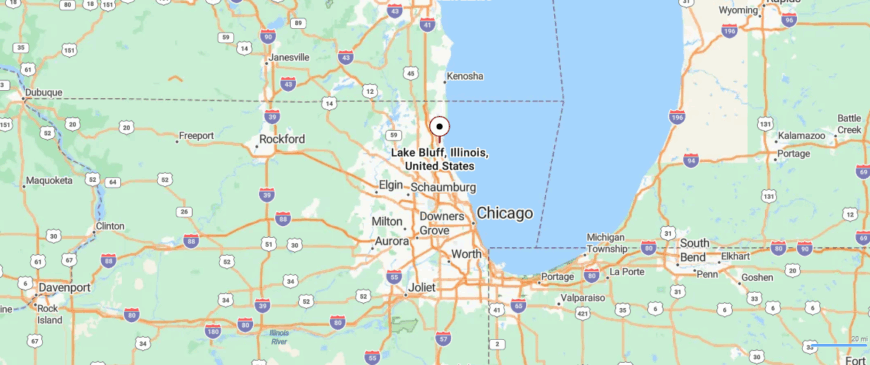
Lake Bluff is a village in Lake County, Illinois, situated on the western shore of Lake Michigan about 35 miles north of downtown Chicago. It spans just under 5 square miles and lies between Lake Forest to the south and North Chicago to the north. The village center sits close to the lakefront, with tree-lined neighborhoods extending westward.
U.S. Route 41 and Interstate 94 run nearby, providing north–south access to Chicago and Milwaukee. Illinois Route 176 crosses through the village, connecting it west toward Libertyville. Lake Bluff’s location along Lake Michigan combines small-town character with convenient highway and commuter access to the larger Chicago metro area.
#25. Riverside, Illinois
– Overall Rank: 191
– Population: 9,225
– Median household income: $149,464
– Median home value: $471,100 (85% own)
– Median rent: $1,432 (15% rent)
– Top public schools: Riverside Brookfield Township High School (grade A), A.F. Ames Elementary School (grade A), Central Elementary School (grade A)
– Top private schools: Fenwick High School (grade A+), St. Laurence High School (grade A+), Trinity High School (grade A)

About
Riverside is a village in Cook County, Illinois, designed as one of the first planned suburban communities in the United States. With a population of around 9,000, it sits just west of Chicago and offers easy access to the city. The village is recognized for its curving streets, abundant green space, and historic layout.
The design of Riverside was created by landscape architect Frederick Law Olmsted, best known for New York’s Central Park. Its winding roads, scenic parks, and tree-filled landscapes reflect his vision of blending nature with community life. The Riverside Historic District is listed on the National Register of Historic Places, preserving this unique legacy.
Residents enjoy strong schools, active civic organizations, and a lively local culture. Community events, festivals, and volunteer groups keep neighbors connected. With its architectural heritage and natural design, Riverside remains one of the Chicago area’s most distinctive suburbs.
Where is Riverside?

Riverside is a village in Cook County, Illinois, about 10 miles west of downtown Chicago. It covers just under 2 square miles and is bordered by Berwyn to the north and Brookfield to the south. Designed in the 19th century by landscape architect Frederick Law Olmsted, the village is laid out with curving streets and abundant green space along the Des Plaines River.
Metra’s BNSF Railway Line stops in Riverside, offering direct commuter service into Chicago’s Union Station. U.S. Route 34 (Ogden Avenue) passes along the southern edge, linking the village with nearby suburbs. Riverside’s location provides both historic character and convenient access to the Chicago metropolitan area.
#24. Burr Ridge, Illinois
– Overall Rank: 188
– Population: 11,131
– Median household income: $174,342
– Median home value: $706,400 (95% own)
– Median rent: $2,371 (5% rent)
– Top public schools: Hinsdale Central High School (grade A+), Lyons Township High School (grade A+), Elm Elementary School (grade A+)
– Top private schools: St. Laurence High School (grade A+), Nazareth Academy (grade A), Benet Academy (grade A)

About
Burr Ridge is a village in both Cook and DuPage Counties, Illinois, with a population of about 11,000. It is located roughly 20 miles southwest of Chicago, offering residents a suburban retreat with city access. The community is known for its spacious homes, rolling landscapes, and quiet neighborhoods.
The Burr Ridge Village Center serves as a focal point for shopping, dining, and entertainment. Forest preserves and parks around the village provide trails, open fields, and places for outdoor activities. Its location near major highways makes commuting and travel convenient for residents.
Education is supported by several highly regarded school districts that serve families in the area. Community organizations and local events foster a strong sense of connection among neighbors. With its blend of natural scenery, accessibility, and community pride, Burr Ridge stands out as a desirable place to live.
Where is Burr Ridge?
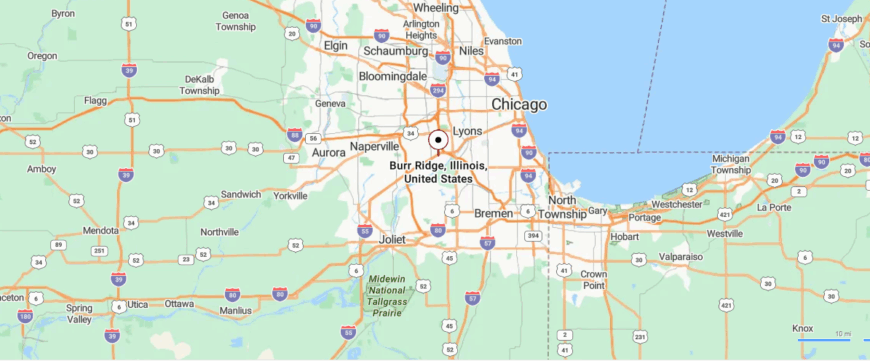
Burr Ridge is a village spanning both Cook and DuPage counties in Illinois, located about 20 miles southwest of downtown Chicago. It covers roughly 7.2 square miles and sits between Hinsdale to the north and Willowbrook to the east. The village is known for its residential neighborhoods set among rolling terrain.
Interstate 55 runs along the southern edge, while Interstate 294 (Tri-State Tollway) cuts through the eastern side, giving it strong highway access. County Line Road and Wolf Road serve as key local routes linking Burr Ridge to surrounding towns. With its position at the junction of major interstates, the village is well connected to both Chicago and the suburban corridor.
#23. Oak Park, Illinois
– Overall Rank: 183
– Population: 53,834
– Median household income: $103,264
– Median home value: $440,500 (60% own)
– Median rent: $1,409 (40% rent)
– Top public schools: Jones College Prep High School (grade A+), Oak Park & River Forest High School (grade A+), DeVry University Advantage Academy High School (grade A)
– Top private schools: British International School of Chicago, South Loop (grade A+), Saint Ignatius College Prep (grade A+), The Chicago Academy for the Arts (grade A+)

About
Oak Park sits just west of Chicago in Cook County, blending city energy with a neighborhood feel. With more than 50,000 residents, it is one of the larger suburbs in the area. Its location along major transit lines makes commuting into downtown quick and easy.
The village has long been known for its architecture, including the largest collection of Frank Lloyd Wright homes in the world. Prairie School design, historic districts, and tree-shaded streets create a sense of place that feels both classic and distinctive. Beyond architecture, Oak Park supports a lively cultural scene with theaters, music, and art.
Life in Oak Park is shaped by diversity, education, and strong civic pride. Schools and community organizations provide programs that bring neighbors together across generations. Festivals, local markets, and public events ensure that the village stays connected while celebrating its history and culture.
Where is Oak Park?
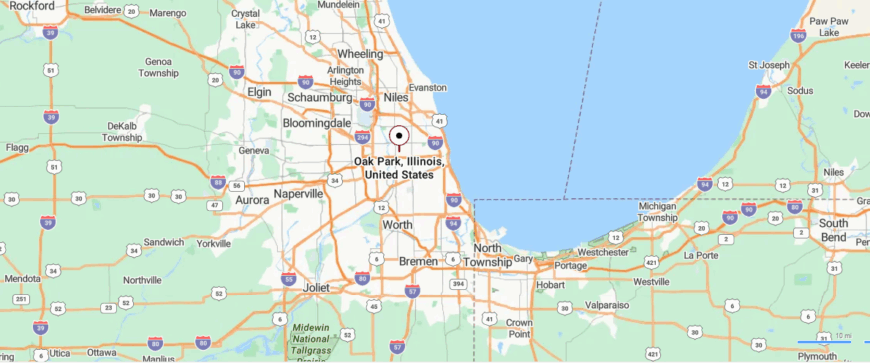
Oak Park is a village in Cook County, Illinois, immediately west of Chicago’s city limits. It spans about 4.7 square miles and is bordered by the city’s Austin neighborhood to the east and River Forest to the west. The village developed as a dense, walkable suburb with a mix of historic neighborhoods and commercial districts.
Transportation access includes the CTA Green and Blue Lines, Metra’s Union Pacific West Line, and major roads such as Harlem Avenue and Madison Street. Interstate 290 (Eisenhower Expressway) runs along the southern boundary, linking Oak Park directly with downtown Chicago. Its location makes Oak Park both an independent community and a closely tied extension of the city.
#22. Leland Grove, Illinois
– Overall Rank: 181
– Population: 1,478
– Median household income: $127,500
– Median home value: $267,100 (94% own)
– Median rent: $1,109 (6% rent)
– Top public schools: Springfield High School (grade A), Iles Elementary School (grade A minus), Lincoln Magnet School (grade A minus)
– Top private schools: Sacred Heart Griffin High School (grade A), Lutheran High School (grade B), Calvary Academy (grade B minus)

About
Leland Grove is a small city in Sangamon County, Illinois, located just west of Springfield. With fewer than 2,000 residents, it offers a quiet, residential environment. The community is known for its tree-lined streets, spacious homes, and strong local identity.
While primarily residential, its proximity to Springfield provides easy access to shopping, dining, and cultural attractions. Parks and nearby green spaces give residents opportunities for recreation close to home. The city maintains a peaceful character that appeals to families and retirees alike.
Education is served by neighboring Springfield school districts, which connect Leland Grove closely to the region. Local organizations and community involvement help strengthen ties among residents. Combining small size with convenient location, Leland Grove represents a calm enclave within central Illinois.
Where is Leland Grove?
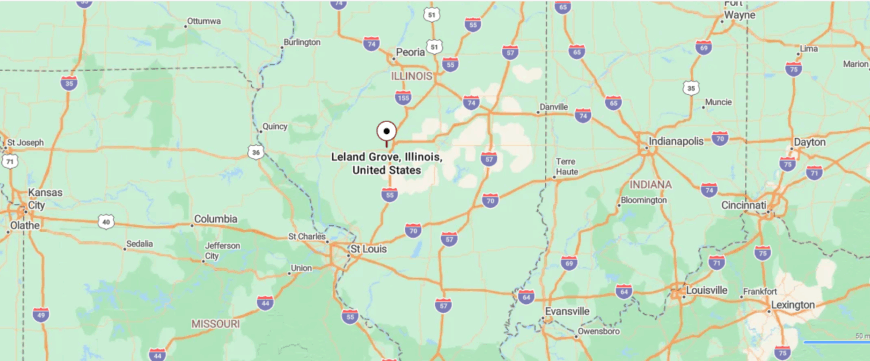
Leland Grove is a small city in Sangamon County, Illinois, situated just southwest of downtown Springfield. It covers less than one square mile, making it one of the smallest municipalities in the region by area. Surrounded almost entirely by Springfield, it functions as a close-in residential enclave.
The city is accessible via Chatham Road, which connects north into Springfield’s core and south toward suburban areas. Nearby routes include Interstate 72 and Interstate 55, both only a few miles away, linking the community to regional travel corridors. Leland Grove’s location provides quick access to Springfield’s amenities while maintaining a distinct residential identity.
#21. Libertyville, Illinois
– Overall Rank: 180
– Population: 20,555
– Median household income: $161,302
– Median home value: $488,800 (81% own)
– Median rent: $1,453 (19% rent)
– Top public schools: Vernon Hills High School (grade A+), Rondout Elementary School (grade A+), Libertyville High School (grade A)
– Top private schools: Lake Forest Academy (grade A+), Woodlands Academy of the Sacred Heart (grade A+), Rochelle Zell Jewish High School (grade A+)
You may also like: Fastest-growing jobs in Illinois

About
Libertyville is a village in Lake County, Illinois, with a population of about 20,000. Positioned roughly 40 miles north of Chicago, it balances suburban living with access to city amenities. Its historic downtown gives the community both charm and identity.
The downtown district is filled with locally owned shops, restaurants, and cultural venues that attract residents and visitors. Libertyville’s park system, along with nearby forest preserves, provides trails, open space, and year-round recreation. Events like summer festivals and farmers markets add to its lively atmosphere.
Schools in Libertyville are consistently strong, making education a central part of village life. Community pride shows in neighborhood organizations and local involvement. With its mix of history, green space, and family-friendly appeal, Libertyville remains one of Lake County’s most recognized communities.
Where is Libertyville?
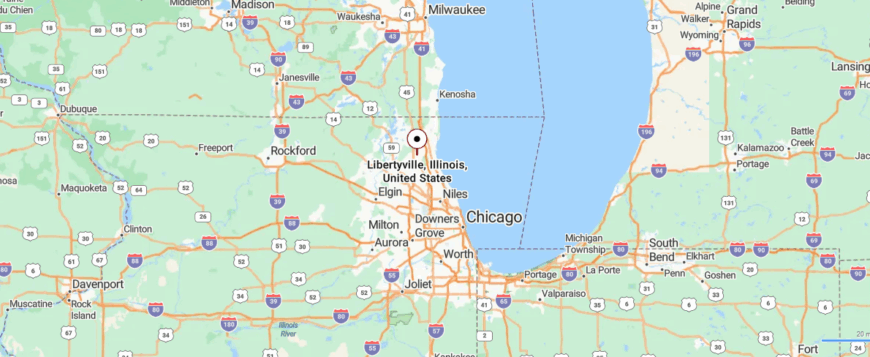
Libertyville is a village in Lake County, Illinois, located about 40 miles north of downtown Chicago. It spans roughly 9 square miles and sits west of Lake Michigan, bordered by Vernon Hills to the south and Mundelein to the west. The Des Plaines River runs through the community, shaping part of its landscape.
U.S. Route 45 and Illinois Route 176 pass through Libertyville, while Interstate 94 lies just east, providing a direct route to both Chicago and Milwaukee. Metra’s Milwaukee District North Line stops in the village, offering commuter rail service into downtown Chicago. Libertyville’s location combines highway and rail access with its position in the northern suburbs.
#20. Hawthorn Woods, Illinois
– Overall Rank: 173
– Population: 9,111
– Median household income: $215,817
– Median home value: $580,400 (98% own)
– Median rent: $3,501 (2% rent)
– Top public schools: Adlai E. Stevenson High School (grade A+), Lake Zurich High School (grade A), Prairie Elementary School (grade A)
– Top private schools: Lake Forest Academy (grade A+), Carmel Catholic High School (grade A), St. Viator High School (grade A)

About
Hawthorn Woods is a village in Lake County, Illinois, with just over 9,000 residents. Set about 40 miles northwest of Chicago, it offers a quieter suburban lifestyle. The community is noted for its large lots, winding streets, and natural surroundings.
Outdoor recreation plays a central role, with multiple parks, golf courses, and nearby forest preserves. Hawthorn Woods Country Club provides both leisure and social opportunities for residents. Seasonal events and festivals help create a strong sense of community spirit.
Schools serving the area are highly regarded and contribute to its family-focused reputation. Local government emphasizes preserving open space and maintaining a tranquil setting. With its balance of rural character and suburban convenience, Hawthorn Woods stands out as a peaceful retreat in Lake County.
Where is Hawthorn Woods?
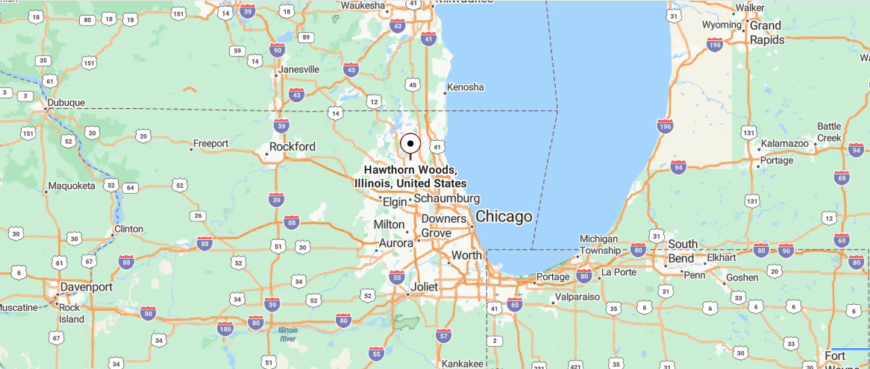
Hawthorn Woods is a village in Lake County, Illinois, about 35 miles northwest of downtown Chicago. It covers roughly 8 square miles of residential neighborhoods, lakes, and open spaces. The village is bordered by Kildeer to the east, Lake Zurich to the south, and Mundelein to the north.
Access is provided by Illinois Route 22 running east–west along the southern edge and Midlothian Road cutting north–south through the area. Interstate 94 lies a short drive east, linking the community to Chicago and Milwaukee. Hawthorn Woods’ location places it within Chicago’s northwestern suburbs while maintaining a spacious, semi-rural character.
#19. Elmhurst, Illinois
– Overall Rank: 160
– Population: 45,648
– Median household income: $143,492
– Median home value: $516,900 (80% own)
– Median rent: $1,843 (20% rent)
– Top public schools: York Community High School (grade A+), Hawthorne Elementary School (grade A), Field Elementary School (grade A)
– Top private schools: Northridge Preparatory School (grade A+), Naperville Christian Academy (grade A+), Fenwick High School (grade A+)

About
Elmhurst is a city in DuPage County, Illinois, home to about 46,000 residents. Located 17 miles west of downtown Chicago, it combines a lively suburban core with convenient access to the city. The community is recognized for its strong neighborhoods and active civic life.
Downtown Elmhurst features a mix of shops, restaurants, and cultural venues that keep the area vibrant. The Elmhurst Art Museum and Wilder Park highlight the city’s commitment to arts and green space. Seasonal events, from parades to concerts, bring residents together throughout the year.
Education is a cornerstone, with Elmhurst University adding both academic and cultural value to the community. Schools and libraries further reinforce the city’s focus on learning and growth. With its cultural institutions, family-friendly amenities, and accessibility, Elmhurst has built a reputation as a dynamic suburban center.
Where is Elmhurst?
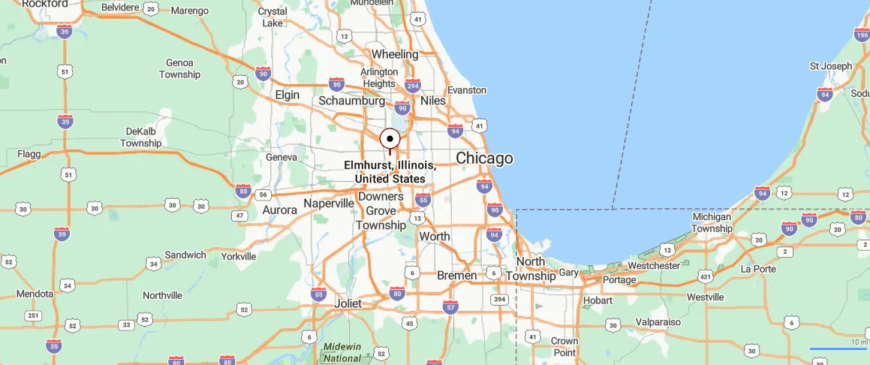
Elmhurst is a city in DuPage County, Illinois, with a small portion extending into Cook County. It is about 17 miles west of downtown Chicago and covers roughly 10 square miles. The community is bordered by Villa Park to the west, Bensenville to the north, and Oak Brook to the south.
Interstate 290 and Interstate 294 pass nearby, while U.S. Route 20 (Lake Street) and Illinois Route 83 run through the city, creating strong highway connections. Metra’s Union Pacific West Line provides commuter rail service from Elmhurst’s downtown station into Chicago. With both rail and highway access, Elmhurst is well tied to the greater Chicago metropolitan area.
#18. Highland Park, Illinois
– Overall Rank: 149
– Population: 30,209
– Median household income: $159,567
– Median home value: $593,000 (84% own)
– Median rent: $1,904 (16% rent)
– Top public schools: New Trier Township High School (grade A+), Glenbrook North High School (grade A+), Deerfield High School (grade A+)
– Top private schools: Lake Forest Academy (grade A+), Roycemore School (grade A+), North Shore Country Day (grade A+)

About
Highland Park is a city in Lake County, Illinois, situated along the shores of Lake Michigan. With around 30,000 residents, it is known for its lakefront access, cultural institutions, and strong community identity. Its location about 25 miles north of Chicago makes it both scenic and accessible.
The city’s lakefront parks, beaches, and nature preserves provide outdoor recreation and open views of the water. Ravinia Festival, one of the oldest outdoor music venues in the country, draws world-class performances each summer. Downtown Highland Park offers shopping, dining, and a walkable environment that adds to its appeal.
Schools in the area are highly regarded, and the community supports a wide range of educational and enrichment opportunities. Local organizations and civic programs keep residents engaged throughout the year. With its blend of cultural offerings, natural beauty, and suburban comfort, Highland Park stands out on Chicago’s North Shore.
Where is Highland Park?
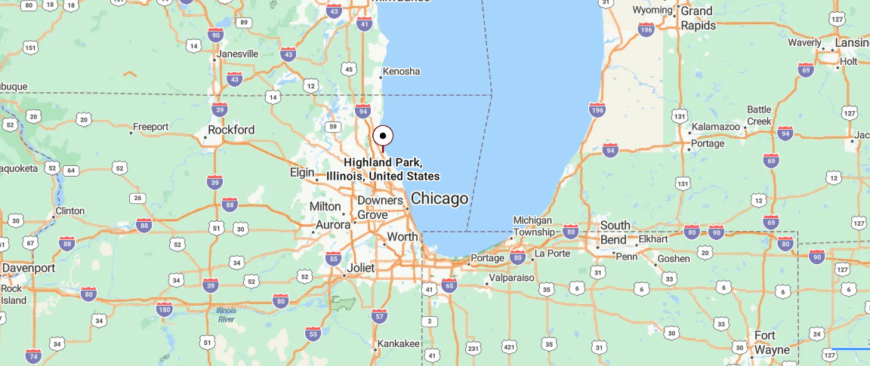
Highland Park is a city in Lake County, Illinois, situated along the western shore of Lake Michigan about 25 miles north of downtown Chicago. It spans roughly 12 square miles and is bordered by Highwood to the north and Deerfield to the west. The city’s eastern edge is defined by its lakefront, with beaches and bluffs overlooking Lake Michigan.
U.S. Route 41 and Interstate 94 run parallel just west of the city, providing direct connections south to Chicago and north to Milwaukee. Metra’s Union Pacific North Line stops at multiple stations in Highland Park, offering commuter rail service into downtown Chicago. Its location on the North Shore gives Highland Park both scenic lake access and strong regional transportation links.
#17. Lisle, Illinois
– Overall Rank: 134
– Population: 23,499
– Median household income: $106,265
– Median home value: $401,000 (57% own)
– Median rent: $1,485 (43% rent)
– Top public schools: Illinois Mathematics and Science Academy (grade A+), Naperville North High School (grade A+), Naperville Central High School (grade A+)
– Top private schools: Naperville Christian Academy (grade A+), St. Francis High School (grade A+), Nazareth Academy (grade A)

About
Lisle is a village in DuPage County, Illinois, with a population of about 24,000. It lies roughly 25 miles west of Chicago and is part of the Illinois Technology and Research Corridor. The village has grown around a balance of business, education, and community life.
Nature plays a defining role, with the Morton Arboretum serving as a major landmark and attraction. Trails, gardens, and seasonal events at the arboretum highlight Lisle’s commitment to green space. Local parks and forest preserves extend these opportunities for recreation across the community.
Lisle is also home to Benedictine University, which contributes to its academic and cultural presence. Schools and community programs provide resources for families and young professionals alike. Combining education, nature, and accessibility, Lisle maintains a unique identity in the western suburbs.
Where is Lisle?
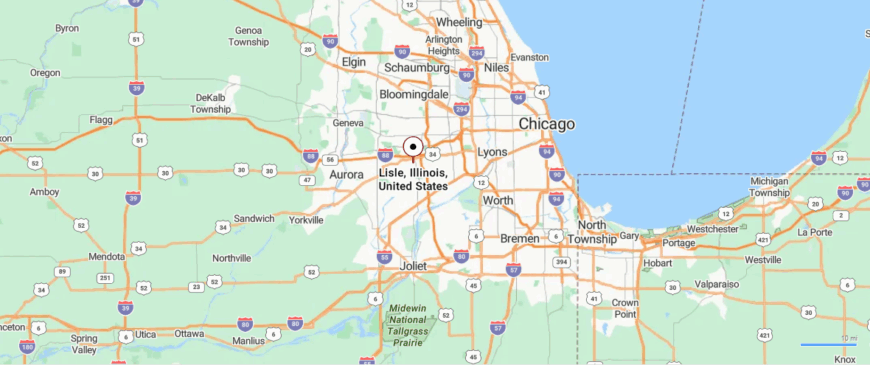
Lisle is a village in DuPage County, Illinois, about 25 miles west of downtown Chicago. It covers roughly 7 square miles and is bordered by Naperville to the west and Downers Grove to the east. The East Branch of the DuPage River runs through the community, shaping part of its landscape.
Interstate 88 passes just north of Lisle, while Interstate 355 lies a few miles east, giving the village strong highway access. U.S. Route 34 (Ogden Avenue) cuts through town, and Metra’s BNSF Railway Line provides commuter service into Chicago. Lisle’s location places it within the Illinois Technology and Research Corridor, while maintaining suburban ties to neighboring communities.
#16. Barrington, Illinois
– Overall Rank: 121
– Population: 11,244
– Median household income: $160,171
– Median home value: $543,700 (78% own)
– Median rent: $1,726 (22% rent)
– Top public schools: Barrington High School (grade A+), Grove Avenue Elementary School (grade A+), Hough Street Elementary School (grade A+)
– Top private schools: Elgin Academy (grade A+), The Einstein Academy (grade A+), Schaumburg Christian School (grade A)
You may also like: Counties with the worst droughts in Illinois

About
Barrington is a village that spans Cook and Lake Counties in Illinois, about 35 miles northwest of Chicago. With a population of around 10,000, it serves as the center of a larger area often referred to as the Barringtons. Its setting of rolling landscapes and forest preserves gives the community a distinctly scenic backdrop.
Historic homes and a preserved downtown highlight Barrington’s past while supporting modern life. The Catlow Theater, dating back to the 1920s, remains a cultural landmark. Parks, equestrian trails, and open spaces continue to play a key role in daily recreation.
Education is anchored by Barrington Community Unit School District 220, known for strong academic programs. The village hosts community events and seasonal festivals that bring residents together throughout the year. With its blend of history, green space, and community pride, Barrington has become a defining suburb of the Chicago region.
Where is Barrington?
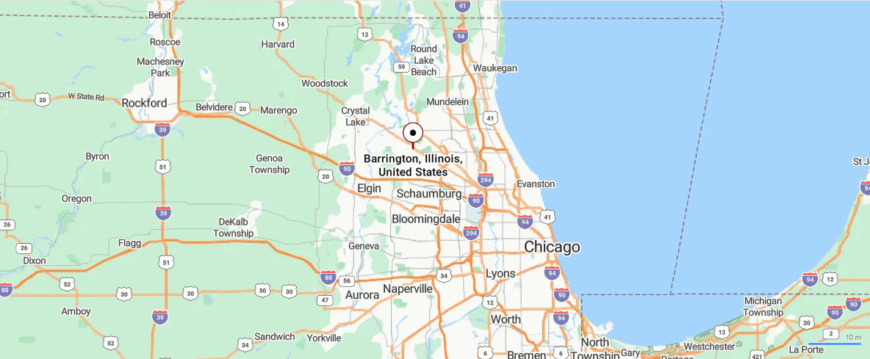
Barrington is a village that spans Cook and Lake counties in northeastern Illinois, about 35 miles northwest of downtown Chicago. It covers nearly 5 square miles and is surrounded by a series of smaller “Barrington area” communities, including South Barrington, Barrington Hills, and Lake Barrington. The village center developed around the Metra Union Pacific Northwest Line, which provides direct rail access into Chicago.
U.S. Route 14 runs diagonally through Barrington, linking it southeast toward Chicago and northwest into McHenry County. Illinois Routes 59 and 62 also cross near the village, creating strong north–south and east–west connections. Barrington’s location places it at the edge of Cook County’s suburban corridor, with convenient rail and highway access balanced by nearby open land and forest preserves.
#15. Glenview, Illinois
– Overall Rank: 120
– Population: 47,896
– Median household income: $134,910
– Median home value: $590,600 (78% own)
– Median rent: $1,950 (22% rent)
– Top public schools: New Trier Township High School (grade A+), Glenbrook South High School (grade A+), Glenbrook North High School (grade A+)
– Top private schools: Lake Forest Academy (grade A+), Roycemore School (grade A+), North Shore Country Day (grade A+)

About
Glenview is a village in Cook County, Illinois, with a population of nearly 50,000. Located about 15 miles northwest of Chicago, it offers a suburban environment with strong ties to the city. Its neighborhoods combine residential areas, business districts, and green spaces.
The village is home to The Glen Town Center, a redevelopment of the former Naval Air Station that now features shops, restaurants, and housing. Nearby, Gallery Park and forest preserves provide trails, lakes, and sports facilities. Cultural attractions such as Kohl Children’s Museum add to Glenview’s appeal for families.
Schools in Glenview are consistently ranked highly, supporting a reputation for quality education. Community groups and local events foster connection and involvement across neighborhoods. With its mix of history, modern development, and accessible location, Glenview continues to grow as a thriving North Shore suburb.
Where is Glenview?
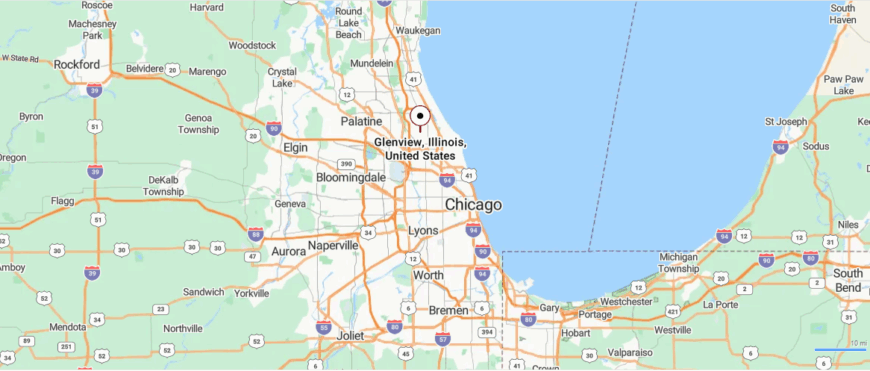
Glenview is a village in Cook County, Illinois, located about 20 miles northwest of downtown Chicago. It covers nearly 14 square miles and is bordered by Northbrook to the north, Skokie to the east, and Des Plaines to the west. The North Branch of the Chicago River runs through the community, shaping part of its landscape.
Interstate 294 (Tri-State Tollway) and U.S. Route 41 pass nearby, while major local routes such as Waukegan Road (Illinois Route 43) and Willow Road provide east–west and north–south access. Metra’s Milwaukee District North Line serves Glenview with direct rail service to Chicago’s Union Station. Its location gives Glenview both strong regional connectivity and proximity to O’Hare International Airport.
#14. Wilmette, Illinois
– Overall Rank: 116
– Population: 27,801
– Median household income: $183,750
– Median home value: $771,500 (87% own)
– Median rent: $1,918 (13% rent)
– Top public schools: New Trier Township High School (grade A+), Glenbrook South High School (grade A+), Niles North High School (grade A+)
– Top private schools: Lake Forest Academy (grade A+), Roycemore School (grade A+), North Shore Country Day (grade A+)

About
Wilmette is a village in Cook County, Illinois, positioned along the shores of Lake Michigan. Home to about 28,000 residents, it is part of the North Shore suburbs just north of Chicago. Its location provides both lakefront scenery and easy access to the city.
The village is well known for the Bahá’í House of Worship, a striking architectural landmark visited from around the world. Gillson Park and Wilmette Harbor offer beaches, boating, and trails that highlight the community’s connection to the lake. A walkable downtown district adds shops, dining, and a strong neighborhood feel.
Wilmette is served by highly regarded schools that reinforce its family-centered reputation. Community organizations, seasonal events, and active civic involvement strengthen local ties. Blending cultural landmarks, recreation, and education, Wilmette stands out as one of the North Shore’s most established communities.
Where is Wilmette?
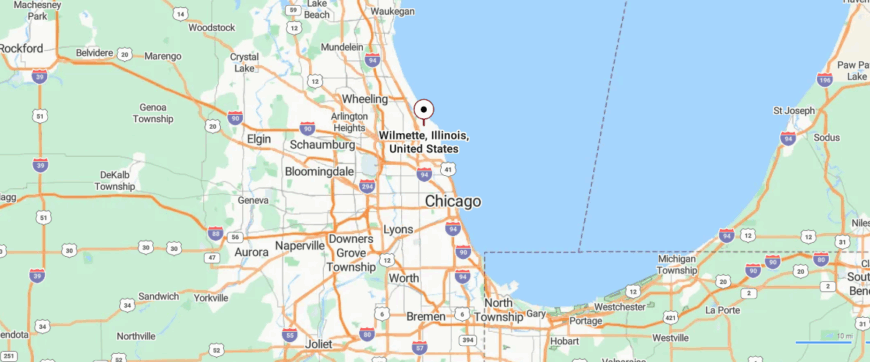
Wilmette is a village in Cook County, Illinois, located about 15 miles north of downtown Chicago along the Lake Michigan shoreline. It covers just over 5 square miles and is bordered by Evanston to the south and Kenilworth to the north. The village’s eastern edge is defined by beaches, parks, and lakefront bluffs.
U.S. Route 41 (Skokie Boulevard) and Interstate 94 (Edens Expressway) run west of the community, giving residents quick access south toward Chicago and north toward Milwaukee. Metra’s Union Pacific North Line and the CTA Purple Line both serve Wilmette, offering multiple rail options into the city. Wilmette’s location combines direct transit and highway links with its lakefront setting on Chicago’s North Shore.
#13. Lincolnshire, Illinois
– Overall Rank: 102
– Population: 7,907
– Median household income: $155,395
– Median home value: $598,100 (80% own)
– Median rent: $2,799 (20% rent)
– Top public schools: Adlai E. Stevenson High School (grade A+), Deerfield High School (grade A+), Bannockburn School (grade A+)
– Top private schools: Lake Forest Academy (grade A+), North Shore Country Day (grade A+), Woodlands Academy of the Sacred Heart (grade A+)

About
Lincolnshire is a village in Lake County, Illinois, with a population of about 7,500. Situated 34 miles north of Chicago, it combines a small residential character with a strong business presence. Its location near major highways makes commuting and travel convenient for residents.
The community is known for its corporate campuses as well as cultural venues like the Marriott Theatre, which attracts visitors with professional stage productions. Parks and forest preserves surround the village, providing trails, open land, and recreational options. Seasonal events and festivals add vibrancy to local life.
Schools in Lincolnshire, particularly those in the award-winning Stevenson High School district, are highly regarded across the region. Neighborhood associations and community programs foster engagement among residents. With its balance of business, culture, and green space, Lincolnshire offers a unique place to live in Lake County.
Where is Lincolnshire?
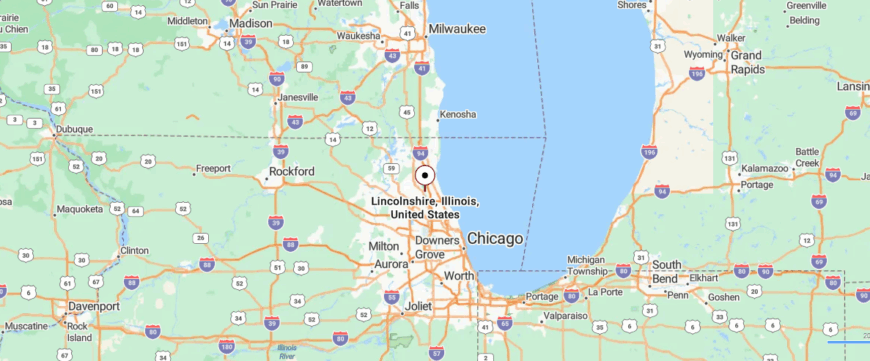
Lincolnshire is a village in Lake County, Illinois, about 30 miles north of downtown Chicago. It spans roughly 4.6 square miles and is bordered by Vernon Hills to the west and Buffalo Grove to the south. The Des Plaines River runs through the center of the community, adding to its layout and open space.
Illinois Route 22 crosses east–west through Lincolnshire, while Illinois Route 21 (Milwaukee Avenue) runs north–south, connecting it to nearby suburbs. Interstate 94 lies just east, offering direct highway access to both Chicago and Milwaukee. Lincolnshire’s location gives it strong regional connectivity while maintaining a suburban setting along the North Shore corridor.
#12. Western Springs, Illinois
– Overall Rank: 80
– Population: 13,557
– Median household income: $198,836
– Median home value: $680,900 (97% own)
– Median rent: $1,871 (3% rent)
– Top public schools: Hinsdale Central High School (grade A+), Lyons Township High School (grade A+), Oak Elementary School (grade A)
– Top private schools: St. Laurence High School (grade A+), Trinity High School (grade A), Nazareth Academy (grade A)

About
Western Springs is a village in Cook County, Illinois, with a population of around 13,000. Located about 15 miles west of Chicago, it blends suburban living with easy access to the city. Its quiet streets and strong community ties make it a popular choice for families.
The village’s water tower, built in the late 1800s, stands as a local landmark and symbol of its history. Downtown Western Springs features shops, restaurants, and a train station that connects directly to Chicago. Parks and recreation programs give residents opportunities to stay active and involved.
Education is a cornerstone of the community, with highly regarded schools serving local families. Seasonal events, neighborhood activities, and volunteer groups strengthen the village’s identity. Western Springs continues to offer a mix of history, convenience, and small-town character in the Chicago suburbs.
Where is Western Springs?
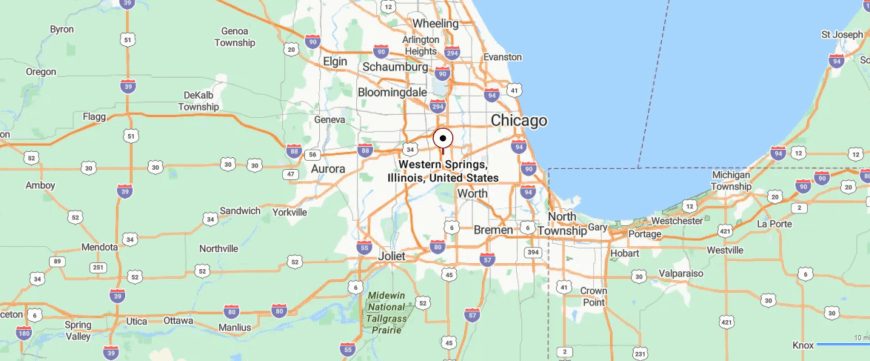
Western Springs is a village in Cook County, Illinois, located about 15 miles west of downtown Chicago. It covers roughly 3.6 square miles and is bordered by La Grange to the south and Hinsdale to the west. The village developed around the Burlington Northern Santa Fe (BNSF) Railway Line, which still provides direct commuter service into Chicago.
U.S. Route 34 (Ogden Avenue) runs along the southern edge, linking the community with nearby suburbs and the city. Interstates 294 and 55 are only a few miles away, offering quick regional highway access. Western Springs’ location combines a small residential footprint with strong rail and road connections into the Chicago metropolitan area.
#11. Deerfield, Illinois
– Overall Rank: 78
– Population: 19,173
– Median household income: $185,762
– Median home value: $594,000 (81% own)
– Median rent: $2,225 (19% rent)
– Top public schools: Glenbrook North High School (grade A+), Deerfield High School (grade A+), Highland Park High School (grade A+)
– Top private schools: Lake Forest Academy (grade A+), North Shore Country Day (grade A+), Woodlands Academy of the Sacred Heart (grade A+)
You may also like: The biggest health care data breaches you should know about in Illinois

About
Deerfield is a village in both Lake and Cook Counties, Illinois, with about 19,000 residents. Situated 25 miles north of Chicago, it offers a suburban lifestyle with strong ties to the city. Its neighborhoods combine quiet streets with access to business centers and retail hubs.
The community is anchored by a downtown area that includes shopping, dining, and a Metra station for commuters. Parks, sports facilities, and nearby forest preserves provide year-round recreation. Seasonal events and farmers markets bring residents together and add to local traditions.
Civic organizations, cultural programs, and volunteer groups play a big role in shaping community life. Schools in the village are also highly regarded, reinforcing Deerfield’s family appeal. With its blend of active neighborhoods, green space, and accessibility, Deerfield continues to stand out on the North Shore.
Where is Deerfield?
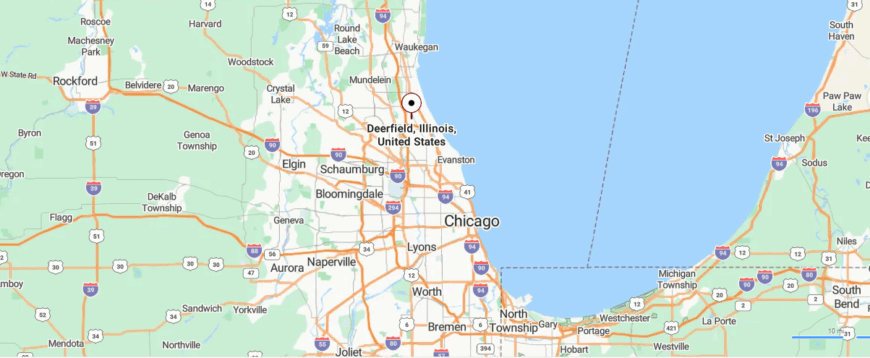
Deerfield is a village in Lake and Cook counties, Illinois, about 25 miles north of downtown Chicago. It spans roughly 5.5 square miles and is bordered by Highland Park to the east and Riverwoods to the west. The village center lies along Metra’s Milwaukee District North Line, giving it direct commuter rail service into Chicago.
U.S. Route 41 runs along the eastern edge, while Interstate 94 passes nearby, providing major north–south highway access between Chicago and Milwaukee. Deerfield Road serves as a key east–west corridor through the village, connecting surrounding suburbs. Deerfield’s location places it within the North Shore region, offering both suburban convenience and easy regional connectivity.
#10. Riverwoods, Illinois
– Overall Rank: 66
– Population: 4,007
– Median household income: $233,036
– Median home value: $776,900 (97% own)
– Median rent: $3,500 (3% rent)
– Top public schools: Adlai E. Stevenson High School (grade A+), Glenbrook North High School (grade A+), Deerfield High School (grade A+)
– Top private schools: Lake Forest Academy (grade A+), North Shore Country Day (grade A+), Woodlands Academy of the Sacred Heart (grade A+)

About
Riverwoods is a village in Lake County, Illinois, with a population of about 3,600. Nestled among dense woodlands, it maintains a semi-rural character despite being only 30 miles from downtown Chicago. The community is known for its spacious lots and natural surroundings.
The village was incorporated in 1959 with a focus on preserving open space and protecting its wooded environment. Today, residents enjoy access to nearby forest preserves, trails, and the Des Plaines River. Local ordinances continue to emphasize conservation and the preservation of tree cover.
Community life centers on outdoor activities, neighborhood associations, and civic engagement. Schools serving Riverwoods come from surrounding districts, providing families with strong educational opportunities. With its natural setting and conservation-minded approach, Riverwoods offers a distinctive lifestyle in the northern suburbs.
Where is Riverwoods?
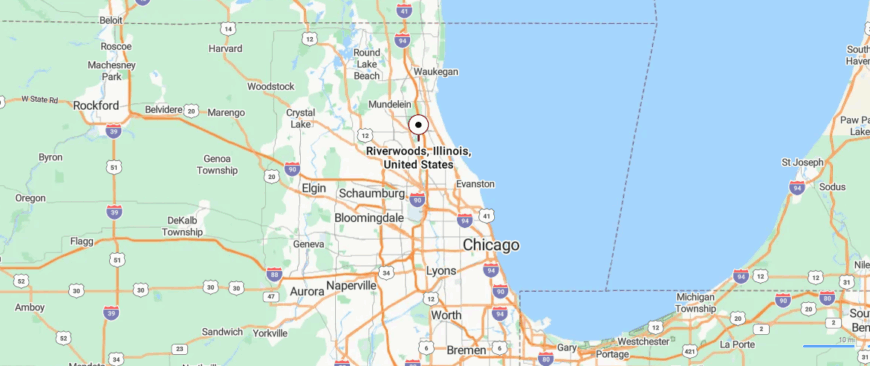
Riverwoods is a village in Lake County, Illinois, about 27 miles north of downtown Chicago. It spans nearly 4 square miles and is bordered by Deerfield to the east and Lincolnshire to the west. Much of the community is characterized by wooded residential areas near the Des Plaines River.
Major routes include Illinois Route 21 (Milwaukee Avenue) running north–south and Deerfield Road providing an east–west corridor. Interstate 94 lies just to the east, offering direct access to Chicago and Milwaukee. Riverwoods’ location combines suburban connectivity with a heavily forested setting along the North Shore corridor.
#9. Northbrook, Illinois
– Overall Rank: 53
– Population: 34,950
– Median household income: $150,236
– Median home value: $621,600 (87% own)
– Median rent: $1,998 (13% rent)
– Top public schools: New Trier Township High School (grade A+), Glenbrook South High School (grade A+), Glenbrook North High School (grade A+)
– Top private schools: Lake Forest Academy (grade A+), Roycemore School (grade A+), North Shore Country Day (grade A+)

About
Northbrook is a village in Cook County, Illinois, home to more than 35,000 residents. Located about 25 miles north of Chicago, it combines a strong residential base with thriving commercial districts. Its mix of neighborhoods, shopping centers, and green space creates a balanced suburban setting.
The community features the Northbrook Court mall and a busy downtown district with restaurants, shops, and entertainment. Numerous parks, golf courses, and forest preserves give residents access to year-round recreation. Cultural programs and arts organizations add depth to village life.
Civic pride shows in local events, festivals, and volunteer opportunities that connect neighbors. Schools in the area are highly regarded and help support the village’s family-centered reputation. With its blend of business, recreation, and community involvement, Northbrook remains a cornerstone suburb on Chicago’s North Shore.
Where is Northbrook?
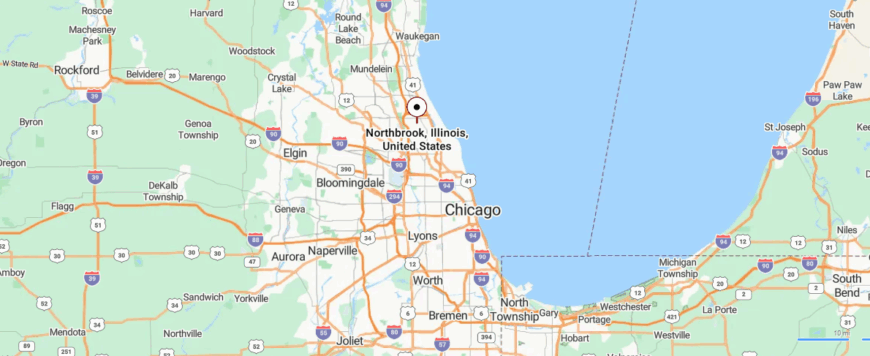
Northbrook is a village in Cook County, Illinois, about 25 miles north of downtown Chicago. It covers around 13 square miles, bordered by Glenview, Deerfield, and Wheeling. The West Fork of the North Branch of the Chicago River runs through its center.
Interstates 94 and 294 provide strong highway access, while Metra’s Milwaukee District North Line offers commuter rail to Chicago. Nearby communities add to its suburban network. Northbrook’s location blends residential areas with business corridors and open space in the northern suburbs.
#8. Evanston, Illinois
– Overall Rank: 46
– Population: 77,181
– Median household income: $93,188
– Median home value: $454,600 (56% own)
– Median rent: $1,625 (44% rent)
– Top public schools: Jones College Prep High School (grade A+), New Trier Township High School (grade A+), Evanston Township High School (grade A+)
– Top private schools: Roycemore School (grade A+), North Shore Country Day (grade A+), Lycée Français de Chicago (grade A+)

About
Evanston is best known as the home of Northwestern University, a major academic and cultural presence on the Lake Michigan shoreline. The city of nearly 80,000 residents sits directly north of Chicago, offering a blend of urban vibrancy and lakefront beauty. Its diverse neighborhoods range from historic districts to bustling business corridors.
The community has a long history of social activism and cultural innovation, reflected in its arts organizations, theaters, and civic programs. Beaches, parks, and bike paths connect residents to the water and outdoor spaces. Downtown Evanston adds another layer of energy with restaurants, shops, and a thriving nightlife.
Community life is strengthened through festivals, public events, and active neighborhood groups. Education extends beyond Northwestern, with strong public schools and lifelong learning programs available to residents. With its university influence, cultural depth, and lakeside setting, Evanston stands apart as one of the most dynamic communities in the region.
Where is Evanston?
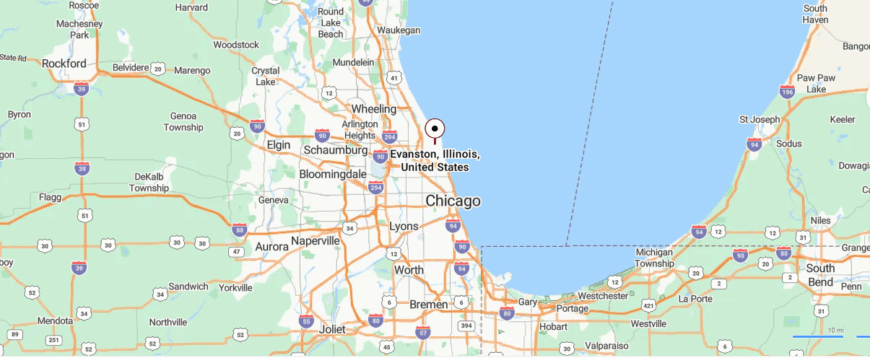
Evanston is a city in Cook County, Illinois, located directly north of Chicago along Lake Michigan. It covers about 7.8 square miles and is bordered by Skokie to the west and Wilmette to the north. Northwestern University and lakefront parks define much of its eastern edge.
U.S. Route 41 and Interstate 94 run nearby, while Metra’s Union Pacific North Line and the CTA Purple Line provide direct rail into Chicago. Sheridan Road and Ridge Avenue serve as key local routes. Evanston’s location combines lakefront access, major transit connections, and close ties to the Chicago metropolitan core.
#7. Kildeer, Illinois
– Overall Rank: 45
– Population: 4,133
– Median household income: $250,001
– Median home value: $683,900 (99% own)
– Median rent: $961 (1% rent)
– Top public schools: Adlai E. Stevenson High School (grade A+), Lake Zurich High School (grade A), Prairie Elementary School (grade A)
– Top private schools: Carmel Catholic High School (grade A), Schaumburg Christian School (grade A), St. Viator High School (grade A)

About
Kildeer is a village in Lake County, Illinois, with a population of about 4,000. Located roughly 30 miles northwest of Chicago, it is known for its semi-rural atmosphere. Large residential lots and natural landscapes give the community a quiet, open feel.
The village emphasizes conservation, with zoning that preserves open space and wooded areas. Parks, trails, and nearby forest preserves provide outdoor recreation. Local shopping centers and dining options serve residents while keeping the village connected to surrounding suburbs.
Community life is shaped by family-oriented events, neighborhood associations, and civic programs. Schools serving Kildeer come from surrounding districts and are well regarded by families in the area. With its focus on preservation and its spacious setting, Kildeer offers a distinctive suburban lifestyle in Lake County.
Where is Kildeer?
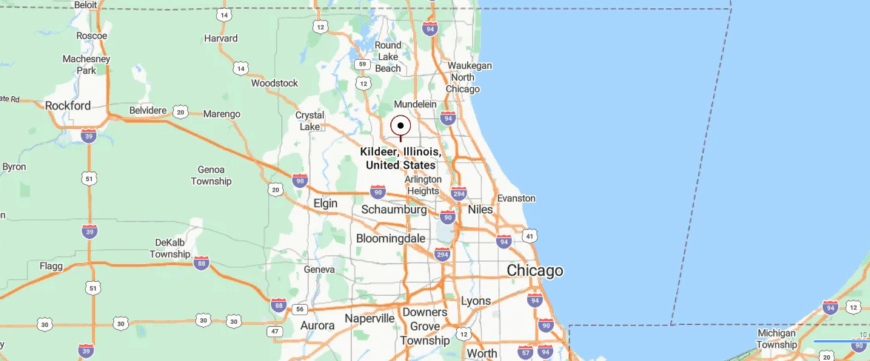
Kildeer is a village in Lake County, Illinois, about 30 miles northwest of downtown Chicago. It spans roughly 4.6 square miles and is bordered by Deer Park to the south and Hawthorn Woods to the west. The community is largely residential with open space and small lakes throughout.
Access is provided by Rand Road (U.S. Route 12) along the southern edge and Quentin Road (Illinois Route 22) to the east. Interstate 94 lies several miles east, offering regional highway connections. Kildeer’s location places it within Chicago’s northwest suburbs while maintaining a quiet, low-density setting.
#6. Vernon Hills, Illinois
– Overall Rank: 38
– Population: 26,750
– Median household income: $117,253
– Median home value: $370,700 (66% own)
– Median rent: $1,873 (34% rent)
– Top public schools: Adlai E. Stevenson High School (grade A+), Vernon Hills High School (grade A+), Libertyville High School (grade A)
– Top private schools: Lake Forest Academy (grade A+), Woodlands Academy of the Sacred Heart (grade A+), Christian Heritage Academy (grade A+)
You may also like: Best private high schools in Illinois

About
Vernon Hills is a village in Lake County, Illinois, with a population of about 26,000. It began as a small residential community but grew rapidly in the late 20th century. Today, it serves as both a commercial hub and a suburban home base.
The village is home to Hawthorn Mall, a major shopping and dining destination in the area. Parks, golf courses, and forest preserves provide space for recreation and relaxation. Community events and seasonal festivals help bring residents together throughout the year.
Local government emphasizes both development and green space, balancing growth with livability. Schools serving Vernon Hills are well regarded, supporting its reputation as a family-friendly suburb. With its mix of commerce, recreation, and community spirit, Vernon Hills plays a central role in Lake County’s suburban landscape.
Where is Vernon Hills?
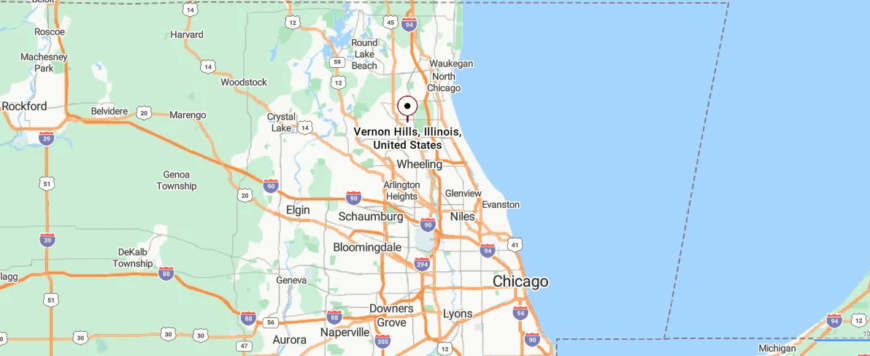
Vernon Hills is a village in Lake County, Illinois, about 35 miles north of downtown Chicago. It covers around 8 square miles and is bordered by Libertyville to the west and Lincolnshire to the east. The Des Plaines River flows nearby, shaping part of the surrounding landscape.
Major routes include Illinois Route 60 running east–west and Milwaukee Avenue (Illinois Route 21) running north–south. Interstate 94 lies just east, providing direct access to Chicago and Milwaukee. Vernon Hills’ location places it along a key suburban corridor with strong highway connections across Lake County.
#5. Buffalo Grove, Illinois
– Overall Rank: 32
– Population: 42,934
– Median household income: $127,553
– Median home value: $380,700 (83% own)
– Median rent: $1,988 (17% rent)
– Top public schools: Adlai E. Stevenson High School (grade A+), Deerfield High School (grade A+), Buffalo Grove High School (grade A+)
– Top private schools: Lake Forest Academy (grade A+), North Shore Country Day (grade A+), Woodlands Academy of the Sacred Heart (grade A+)

Buffalo Grove grew from farmland into one of the largest suburbs in the Chicago area, spanning both Cook and Lake Counties. Today it is home to more than 40,000 residents and continues to expand as a diverse community. Its location about 30 miles northwest of Chicago provides access to both suburban comfort and city connections.
The village features extensive parkland, sports fields, and recreational facilities maintained by the Buffalo Grove Park District. Local shopping centers, restaurants, and cultural venues add to the area’s liveliness. Annual events such as Buffalo Grove Days bring residents together and highlight community pride.
Civic engagement is strong, with neighborhood organizations, volunteer programs, and local initiatives shaping daily life. Schools serving Buffalo Grove are consistently well regarded and support the village’s family-centered appeal. Combining its history of growth, community activity, and strong services, Buffalo Grove stands out as a key suburb in the northwest corridor.
Where is Buffalo Grove?
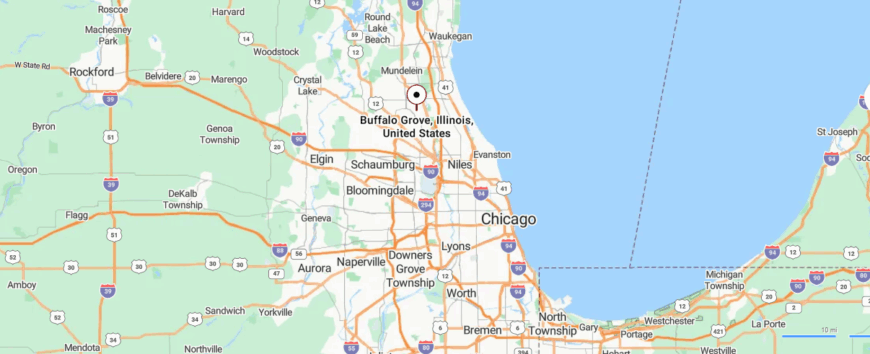
Buffalo Grove is a village spanning Lake and Cook counties in Illinois, about 30 miles northwest of downtown Chicago. It covers nearly 10 square miles and is bordered by Wheeling to the east and Lincolnshire to the north. The community is primarily residential with commercial corridors along its major roads.
Key routes include Illinois Route 83 running north–south and Lake Cook Road forming part of its southern boundary. Interstate 294 lies a few miles east, giving residents direct regional access. Buffalo Grove’s location ties it to Chicago’s northwestern suburbs with strong roadway connections to neighboring towns.
#4. Hinsdale, Illinois
– Overall Rank: 24
– Population: 17,169
– Median household income: $250,001
– Median home value: $962,700 (89% own)
– Median rent: $1,875 (11% rent)
– Top public schools: Hinsdale Central High School (grade A+), Lyons Township High School (grade A+), Westmont High School (grade A+)
– Top private schools: St. Laurence High School (grade A+), Trinity High School (grade A), Nazareth Academy (grade A)

About
Hinsdale is a village in both Cook and DuPage Counties, Illinois, with a population of about 17,000. Located 20 miles west of Chicago, it is known for its historic homes, tree-lined streets, and vibrant community life. Its setting along the Burlington Northern rail line makes commuting into the city convenient.
Downtown Hinsdale serves as the heart of the village, featuring boutiques, restaurants, and cultural spots in a walkable layout. Parks and recreation areas provide open space for sports, picnics, and community gatherings. The village also maintains a commitment to preserving its historic architecture and character.
Community pride shows through neighborhood organizations, volunteer groups, and local traditions. Schools in the area are well regarded and attract families seeking strong educational opportunities. With its blend of history, accessibility, and community ties, Hinsdale remains one of the most notable western suburbs of Chicago.
Where is Hinsdale?
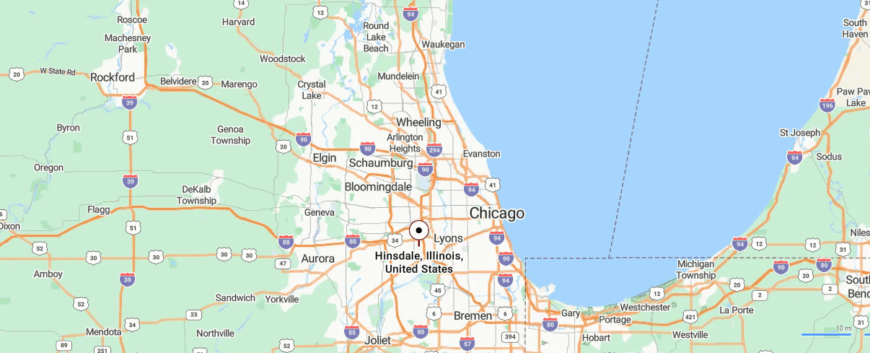
Hinsdale is a village in DuPage and Cook counties, Illinois, about 20 miles west of downtown Chicago. It spans around 4.6 square miles and is bordered by Oak Brook to the north and Western Springs to the east. The downtown district developed around the Burlington Northern Santa Fe (BNSF) Railway Line, which still provides commuter service to Chicago.
U.S. Route 34 (Ogden Avenue) runs along the northern edge, while Interstate 294 lies just east, offering regional highway access. Interstate 55 is also a short drive south, linking Hinsdale to Chicago and surrounding suburbs. Its location combines convenient rail and road access with a residential setting in the western suburbs.
#3. Long Grove, Illinois
– Overall Rank: 22
– Population: 8,279
– Median household income: $236,172
– Median home value: $721,100 (96% own)
– Median rent: $3,501 (4% rent)
– Top public schools: Adlai E. Stevenson High School (grade A+), Vernon Hills High School (grade A+), Lake Zurich High School (grade A)
– Top private schools: Lake Forest Academy (grade A+), Rochelle Zell Jewish High School (grade A+), Carmel Catholic High School (grade A)

About
Long Grove is one of Lake County’s oldest villages, settled in the mid-1800s by German farmers. Today it has a population of just over 8,000 and maintains a distinctly rural-suburban character. Its location about 35 miles northwest of Chicago provides both seclusion and convenience.
The historic downtown is a centerpiece, with preserved buildings, cobblestone walks, and locally owned shops. Festivals such as the annual Apple Fest and Strawberry Fest highlight the village’s traditions and draw visitors from across the region. Open lands, ponds, and nearby forest preserves reinforce its rustic atmosphere.
Community identity is shaped by a focus on preservation and civic engagement. Neighborhoods feature large lots and natural settings that set Long Grove apart from denser suburbs. With its history, festivals, and emphasis on open space, the village offers a lifestyle that feels both timeless and connected.
Where is Long Grove?

Long Grove is a village in Lake County, Illinois, about 35 miles northwest of downtown Chicago. It covers roughly 12 square miles and is bordered by Buffalo Grove to the east and Hawthorn Woods to the west. The community is known for its open spaces, small lakes, and historic village center.
Access is provided by Illinois Route 53 to the east and Illinois Route 83 running north–south through the village. Old McHenry Road serves as a local connector between surrounding suburbs. Long Grove’s location offers suburban access while maintaining a more rural, spacious character within Chicago’s northwest suburbs.
#2. Clarendon Hills, Illinois
– Overall Rank: 18
– Population: 8,658
– Median household income: $115,923
– Median home value: $570,600 (84% own)
– Median rent: $1,126 (16% rent)
– Top public schools: Hinsdale Central High School (grade A+), Westmont High School (grade A+), Walker School (grade A+)
– Top private schools: Nazareth Academy (grade A), Benet Academy (grade A), Hinsdale Adventist Academy (grade A)

About
Clarendon Hills is a village in DuPage County, Illinois, with a population of about 9,000. Situated 18 miles west of Chicago, it offers a small-community feel within the greater metropolitan area. Its compact neighborhoods and walkable design give the village a close-knit atmosphere.
The downtown district, centered around the Metra station, provides shops, dining, and convenient commuter access. Parks and recreation programs offer activities for residents of all ages. Seasonal events such as Daisy Days and concerts in the park bring neighbors together throughout the year.
Community life thrives on volunteer groups, civic organizations, and family-centered traditions. Schools serving Clarendon Hills are part of highly regarded districts that strengthen its family appeal. With its mix of convenience, local charm, and active community, Clarendon Hills continues to be one of DuPage County’s most appealing villages.
Where is Clarendon Hills?
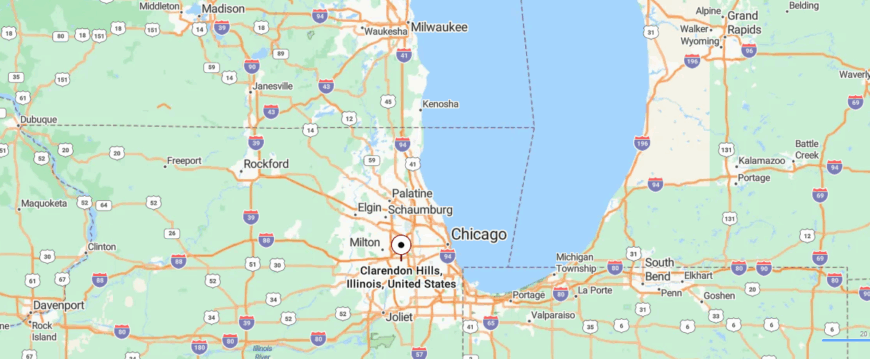
Clarendon Hills is a village in DuPage County, Illinois, about 18 miles west of downtown Chicago. It spans just 1.8 square miles and is bordered by Hinsdale to the east and Westmont to the north. The village center developed along the BNSF Railway Line, which provides direct Metra commuter service into Chicago.
U.S. Route 34 (Ogden Avenue) runs just north of the community, while Interstate 294 and Interstate 88 are only a few miles away, offering highway access to the region. Nearby towns like Downers Grove and Oak Brook provide additional connections. Clarendon Hills’ location gives it both convenient transit options and a small-village setting within the Chicago suburbs.
#1. Naperville, Illinois
– Overall Rank: 15
– Population: 149,089
– Median household income: $143,754
– Median home value: $482,600 (74% own)
– Median rent: $1,787 (26% rent)
– Top public schools: Illinois Mathematics and Science Academy (grade A+), Neuqua Valley High School (grade A+), Metea Valley High School (grade A+)
– Top private schools: Naperville Christian Academy (grade A+), St. Francis High School (grade A+), Nazareth Academy (grade A)

About
Naperville has grown from a small frontier settlement into one of the largest cities in Illinois, with nearly 150,000 residents. Located about 30 miles west of Chicago, it combines historic charm with modern development. Its size and resources make it a key hub in DuPage and Will Counties.
The city’s Riverwalk serves as a central landmark, stretching along the DuPage River with paths, parks, and gathering spaces. Downtown Naperville offers restaurants, shopping, and cultural venues in a lively, walkable district. Festivals, concerts, and parades add to the community’s active calendar of events.
Civic life is supported by strong institutions, including the Naperville Public Library system and local museums. Schools and universities reinforce the city’s focus on education and community growth. With its historic roots, thriving economy, and vibrant public spaces, Naperville stands out as one of Illinois’ most dynamic cities.
Where is Naperville?
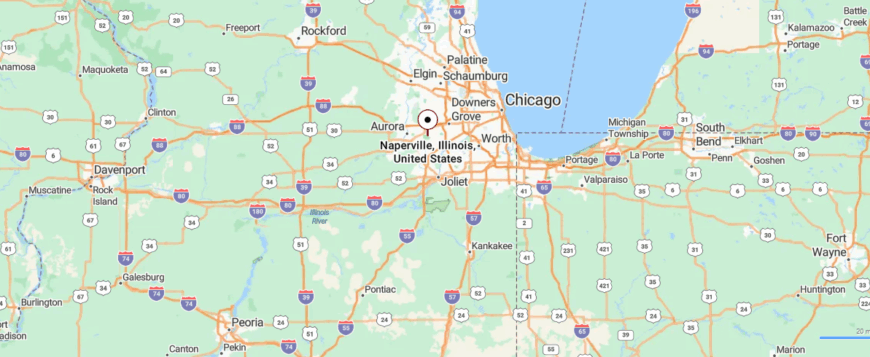
Naperville is a city in DuPage and Will counties, Illinois, about 30 miles west of downtown Chicago. It spans roughly 39 square miles, making it one of the largest suburbs by area and population. The city is bordered by Aurora to the west, Lisle to the east, and Bolingbrook to the south.
Interstate 88 runs along the northern edge, while U.S. Route 34 (Ogden Avenue) and Illinois Route 59 serve as major corridors through the city. Metra’s BNSF Railway Line provides direct commuter service into Chicago from the downtown Naperville and Route 59 stations. Naperville’s location offers strong highway and rail access, tying it to both the Chicago metro and neighboring suburban centers.
This story features data reporting and writing by Elena Cox and is part of a series utilizing data automation across 40 states.
You may also like: Best counties to raise a family in Illinois
By Stacker






